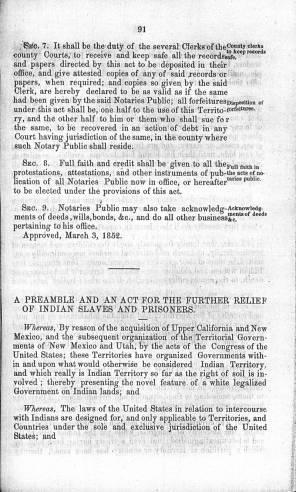An Act for the Further Relief of Indian Slaves and Prisoners
The newly transcribed debates concerning An Act for the Relief of Indian Slaves and Prisoners reveal a group of deeply conflicted lawmakers, some of whom were not convinced that they had the authority to legislate for what they deemed to be “Indian country.” All of the legislators were anxious to solve the problem of Indian slavery in a humane manner yet they strongly disagreed about how to do so. At least one legislator, Orson Pratt, charged that the body was instituting a form of slavery for Native Americans. Others emphasized that they were rescuing Indian captives from slavery and quite possibly death.
The legislative process ultimately lasted for two months. In fact, the main text of the Indian indenture bill was not approved by the legislature until March 6, the last day of the session. The final statute created a form of involuntary apprenticeship for Native Americans who Latter-day Saint settlers ransomed from Ute traffickers. Although the Utah legislators thought of this as a uniquely benevolent solution to the problem, it shared similarities with practices that existed in other parts of the Mexican Cession.

